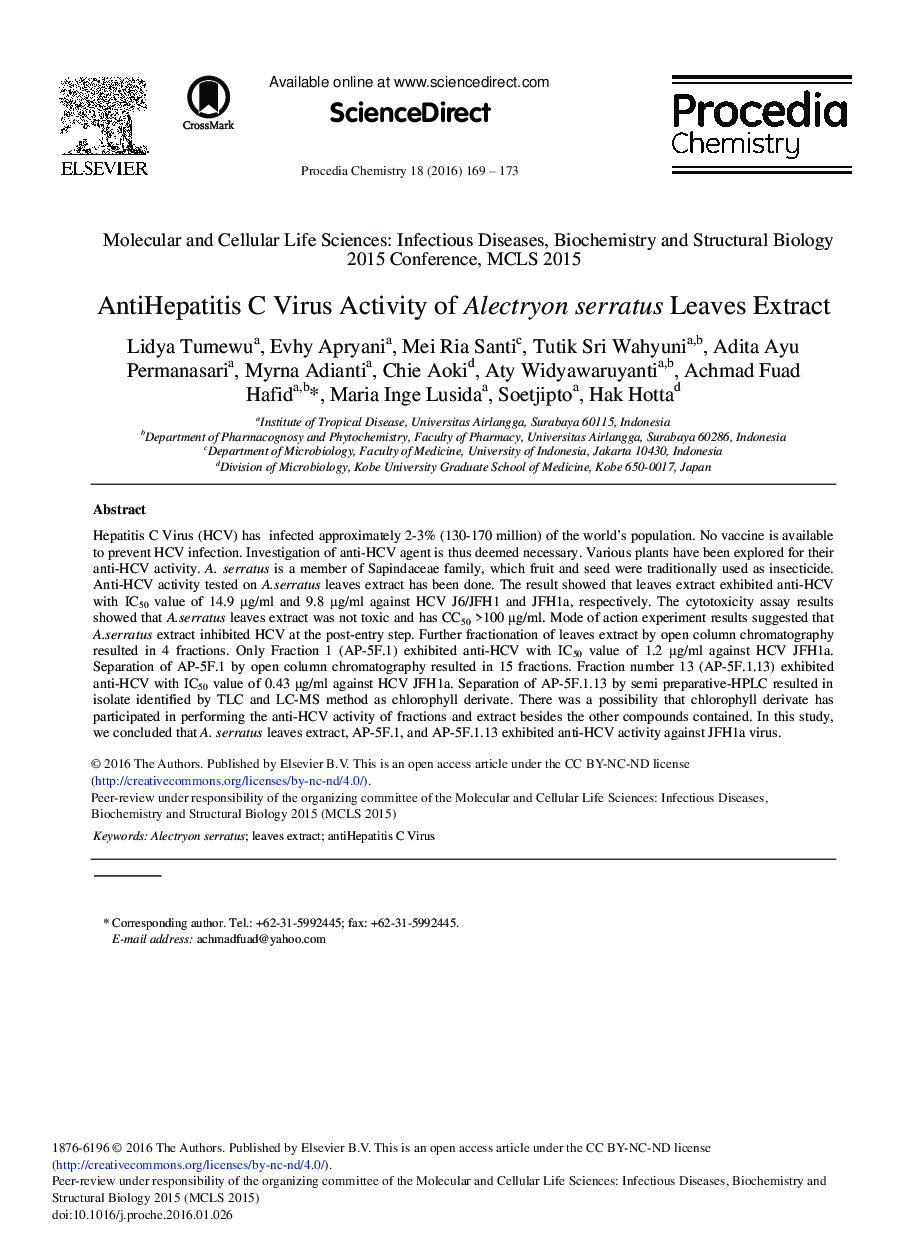| Article ID | Journal | Published Year | Pages | File Type |
|---|---|---|---|---|
| 239959 | Procedia Chemistry | 2016 | 5 Pages |
Hepatitis C Virus (HCV) has infected approximately 2-3% (130-170 million) of the world's population. No vaccine is available to prevent HCV infection. Investigation of anti-HCV agent is thus deemed necessary. Various plants have been explored for their anti-HCV activity. A. serratus is a member of Sapindaceae family, which fruit and seed were traditionally used as insecticide. Anti-HCV activity tested on A.serratus leaves extract has been done. The result showed that leaves extract exhibited anti-HCV with IC50 value of 14.9 μg/ml and 9.8 μg/ml against HCV J6/JFH1 and JFH1a, respectively. The cytotoxicity assay results showed that A.serratus leaves extract was not toxic and has CC50 >100 μg/ml. Mode of action experiment results suggested that A.serratus extract inhibited HCV at the post-entry step. Further fractionation of leaves extract by open column chromatography resulted in 4 fractions. Only Fraction 1 (AP-5F.1) exhibited anti-HCV with IC50 value of 1.2 μg/ml against HCV JFH1a. Separation of AP-5F.1 by open column chromatography resulted in 15 fractions. Fraction number 13 (AP-5F.1.13) exhibited anti-HCV with IC50 value of 0.43 μg/ml against HCV JFH1a. Separation of AP-5F.1.13 by semi preparative-HPLC resulted in isolate identified by TLC and LC-MS method as chlorophyll derivate. There was a possibility that chlorophyll derivate has participated in performing the anti-HCV activity of fractions and extract besides the other compounds contained. In this study, we concluded that A. serratus leaves extract, AP-5F.1, and AP-5F.1.13 exhibited anti-HCV activity against JFH1a virus.
